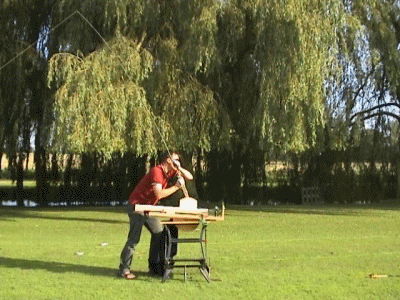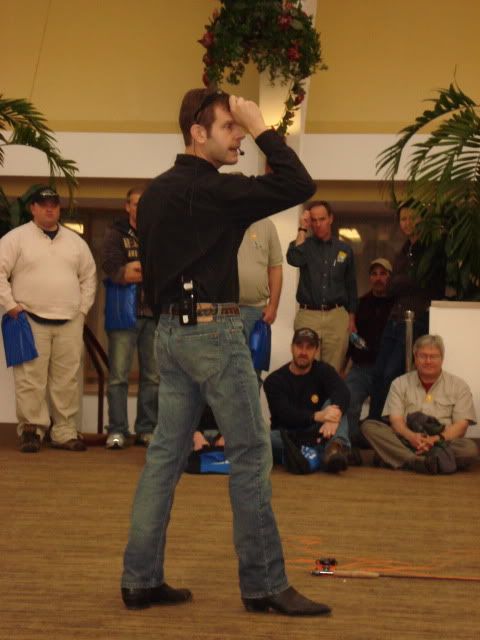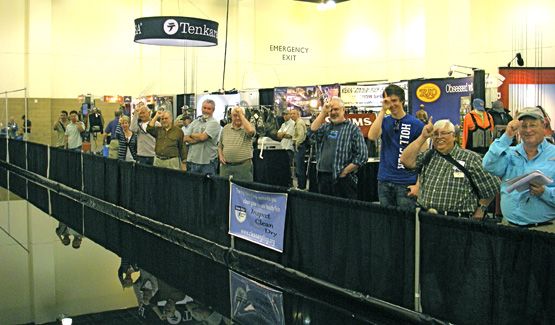philfromottawa
New member
- Messages
- 3
- Reaction score
- 0
Hello. I'll give you some background first and then questions itemized below.
I am a fly tier. I currently fish on ultralight spinning gear because I primarily fish when I'm camping (so can't afford the weight/bulk of 2 fishing rigs on the portages) and I spend about 80% of the time trolling from a canoe and 19% casting in small creeks, almost exclusively for brook and lake trout. When I realized that you could effectively troll with fly gear I decided to streamline my hobbies and am breaking into fly-fishing.
As I expect my small creek fishing % to increase since fly fishing is more efficient for these places and since the rod type for trolling will not be as critical, I got myself a 7 1/2 ft 4wt fiberglass (for durability - I'll be camping/bush-wacking headwaters) slow action rod, a matching DT line and a short, relatively heavy leader (started off as a 9ft 6x but with wind knots and breakoffs...) and I've been trying to teach myself to cast with books and youtube videos.
At the shorter lengths my casting seems to be okay but in desperate need of practice. Once I try to extend it, though, my line loses momentum and starts to fall to the ground before loading the rod for the back/forecast. I've measured this distance four times and it's been almost exactly 4 rod lengths (30ft if its nominal length is accurate) + leader length. I know that slow rods don't cast as far and have heard in general that DT lines don't cast as far (but others have said they'll cast as far just don't shoot as well) so I am wondering if (QUESTION #1) is 30ft + leader as much as I can reasonably expect from my rod? From what I read most of my cast will likely be within these limits, but I'd like to learn the basics as well as I can.
When I do try and muscle the line out further, a couple of things start to happen. One, my line hits my rod/the other part of the loop on the forecast which to me suggests that either I am going past the 10 o'clock position (I'm left-handed - do right-handers think of their back cast as the 2 o'clock?) in order to lengthen the power stroke or the line does start to fall before I start my forecast. I have tried to throw the line higher behind me (stopping closer to 11 o'clock) but that seems to slow the line even more and I end up whip-cracking behind me (from what I've read this means I am starting the forecast to early) or end up with the line falling to the ground behind me without ever straightening out completely so this is not a good solution. (QUESTION #2) does my reasoning above seem to make sense or am I missing something that might help if I understood better.
The other way I can extend my line another 3 or 4 strips (about 6 ft) is to break the rule that every source I have read/watched says is written in stone - thou shalt no bend thy wrist. The funny thing is that this seems successful and also feels more natural (more fluid and less rigid). My loops are a bit looser (about 3ft) but still defined and not an arc. I don't really consider what I do "breaking" my wrist. I'd describe it more as letting my wrist lag behind my arm during the first part of the cast and then towards the end of the cast snapping my wrist to the position that it would have been in had I never let it move in the first place. The starting and ending points remain 10 and 2 o'clock. I look at it as letting the rod preload during the first part of the cast and then applying the maximum speed to the line towards the end. (QUESTION #3) Does the "wrist commandment" apply to a very slow rod or is it more specific to the fast rods that almost everyone uses today? i.e. Does casting a slow rod need a slightly different casting technique?
I think I'll keep it to that as this has gotten pretty long. Thank you in advance for your replies, but in the interests of keeping this thread on topic, please refrain from posting that I should just get another rod or purchase casting lessons. I can appreciate those viewpoints but am choosing to learn to use my current rod as best I can (I built it myself and am a little attached to it)
I am a fly tier. I currently fish on ultralight spinning gear because I primarily fish when I'm camping (so can't afford the weight/bulk of 2 fishing rigs on the portages) and I spend about 80% of the time trolling from a canoe and 19% casting in small creeks, almost exclusively for brook and lake trout. When I realized that you could effectively troll with fly gear I decided to streamline my hobbies and am breaking into fly-fishing.
As I expect my small creek fishing % to increase since fly fishing is more efficient for these places and since the rod type for trolling will not be as critical, I got myself a 7 1/2 ft 4wt fiberglass (for durability - I'll be camping/bush-wacking headwaters) slow action rod, a matching DT line and a short, relatively heavy leader (started off as a 9ft 6x but with wind knots and breakoffs...) and I've been trying to teach myself to cast with books and youtube videos.
At the shorter lengths my casting seems to be okay but in desperate need of practice. Once I try to extend it, though, my line loses momentum and starts to fall to the ground before loading the rod for the back/forecast. I've measured this distance four times and it's been almost exactly 4 rod lengths (30ft if its nominal length is accurate) + leader length. I know that slow rods don't cast as far and have heard in general that DT lines don't cast as far (but others have said they'll cast as far just don't shoot as well) so I am wondering if (QUESTION #1) is 30ft + leader as much as I can reasonably expect from my rod? From what I read most of my cast will likely be within these limits, but I'd like to learn the basics as well as I can.
When I do try and muscle the line out further, a couple of things start to happen. One, my line hits my rod/the other part of the loop on the forecast which to me suggests that either I am going past the 10 o'clock position (I'm left-handed - do right-handers think of their back cast as the 2 o'clock?) in order to lengthen the power stroke or the line does start to fall before I start my forecast. I have tried to throw the line higher behind me (stopping closer to 11 o'clock) but that seems to slow the line even more and I end up whip-cracking behind me (from what I've read this means I am starting the forecast to early) or end up with the line falling to the ground behind me without ever straightening out completely so this is not a good solution. (QUESTION #2) does my reasoning above seem to make sense or am I missing something that might help if I understood better.
The other way I can extend my line another 3 or 4 strips (about 6 ft) is to break the rule that every source I have read/watched says is written in stone - thou shalt no bend thy wrist. The funny thing is that this seems successful and also feels more natural (more fluid and less rigid). My loops are a bit looser (about 3ft) but still defined and not an arc. I don't really consider what I do "breaking" my wrist. I'd describe it more as letting my wrist lag behind my arm during the first part of the cast and then towards the end of the cast snapping my wrist to the position that it would have been in had I never let it move in the first place. The starting and ending points remain 10 and 2 o'clock. I look at it as letting the rod preload during the first part of the cast and then applying the maximum speed to the line towards the end. (QUESTION #3) Does the "wrist commandment" apply to a very slow rod or is it more specific to the fast rods that almost everyone uses today? i.e. Does casting a slow rod need a slightly different casting technique?
I think I'll keep it to that as this has gotten pretty long. Thank you in advance for your replies, but in the interests of keeping this thread on topic, please refrain from posting that I should just get another rod or purchase casting lessons. I can appreciate those viewpoints but am choosing to learn to use my current rod as best I can (I built it myself and am a little attached to it)



